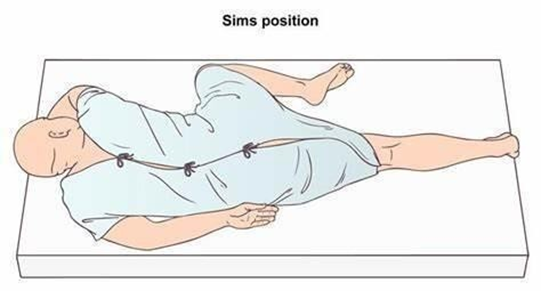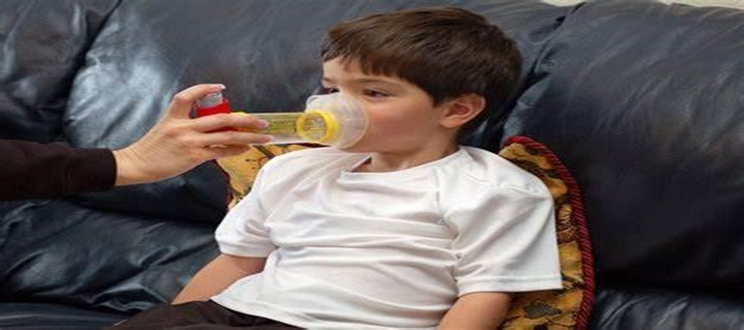PHARMACOLOGY FINAL EXAM 1
ATI PHARMACOLOGY FINAL EXAM 1
Total Questions : 92
Showing 10 questions Sign up for moreThe nurse recognizes that adrenergic drugs cause relaxation of the bronchi and bronchodilation by stimulating which type of receptors?
Explanation
B. Rationale- Beta 2 adrenergic receptors are found on the airways. Beta adrenergic agonists bind on them to stimulate bronchial dilatation relieving obstruction in airway obstructive diseases.
A. Alpha 1 adrenergic receptors are found on the blood vessels
C. Beta receptors are found on the myocardium
D. Dopaminergic receptors are found in the brain
A client tells the nurse that he is having nausea and decreased appetite during drug therapy with a tetracycline antibiotic. Which statement is the nurse's best advice to the client?
Explanation
Rationale- water helps dilute and flush the drug down Milk, yogurt and antacids affect absorption of tetracycline
An adrenergic agonist is ordered for a client in cardiogenic shock. The nurse will note that this drug has had its primary intended effect if which expected outcome occurs?
Explanation
An agonist means it binds to mimic the action of the endogenous neurotransmitter. Adrenergic receptors act to stimulate the sympathetic nervous system leading to the fight/flight response. Increase in heart rate leads to increased cardiac output.
B. reduced anxiety are features of adrenergic blockade
C and D Volume depletion, decreased urine output are features of cardiogenic shock itself
The nurse is developing a care plan for a client who will be self-administering a metered-dose inhaler. Which statement reflects a measurable outcome?
Explanation
Demonstration is a measurable outcome. It allows the nurse to pick any errors in the performance of the task in real time and hence corrections can be made.
A, B and C are vague outcomes that are not feasible to measure.
A laxative has been ordered for a client. The nurse checks the client's medical history and would be concerned if which condition is present?
Explanation
Rationale- Laxatives increase bowel peristalsis which could be risky when given in a client with abdominal pain of unknown origin as it may lead to bowel perforation in cases of obstruction.
A. Laxative help clear ammonia from the gut reducing the risk of hepatic encephalopathy.
B. Laxatives are safe in diverticulosis after ruling out acute diverticulitis
D. Laxatives help in passage of stool in cases of chronic constipation
A nurse is administering nasal decongestant drops for a client. Which of the following actions should the nurse take?
Explanation
Rationale-blowing the nose clears any mucus plugs allowing for optimal absorption
A. Lying on the side post application may lead to spillage of the applied drop
B. Holding the dropper too far leads to spillage with too little medication getting to the desired area
D. Tilting the head too long may lead to unnecessary irritation
A nurse is reviewing the medical record of a client who just returned to the unit following surgery and notes the client has a history of anaphylaxis in response to penicillin. The client's postoperative prescriptions include a dose of cephalexin. Which of the following actions should the nurse take?
Explanation
Rationale- The client is at risk of a life-threatening anaphylaxis as cross reactivity occurs between cephalosporin and penicillin as they both contain a beta lactam ring. Cephalexin should be avoided completely
A. Diphenhydramine is used for mild reactions but not anaphylaxis
B. waiting for rounds delays the client’s medication and hence inappropriate
A nurse is preparing to administer bisacodyl suppository to a client. Which of the following actions should the nurse take? (Select all that apply.)
Explanation
A. Ensures retention of the suppository
B. For smooth insertion
C. Can cause trauma and should be avoided
D. Does not follow anatomy of the distal gut-Sim’s position preferred

E. For infection control
The nurse is reviewing the mechanism of action of antidiarrheal drugs. Which type of antidiarrheal medication works by decreasing the intestinal muscle tone and peristalsis of the intestines?
Explanation
Rationale-Anticholinergics reduce intestinal tone and peristalsis
A. Probiotics are supplements used to boost the gut microbiota
B. Lubricants- coat the intestinal wall making it slippery for passage of stool
D. Absorbents-used to bind irritants or toxin in the gut
When evaluating a client's use of a metered-dose inhaler (MDI), the nurse notes that the client is unable to coordinate the activation of the inhaler with her breathing. What intervention is most appropriate at this time?
Explanation
Rationale- A spacer connects the MDI and the mouth containing any medication exhaled eliminating the need for the coordination
B. Notifying the provider does not solve the client’s need
C. Inhalers are delivered directly into the airway and are not taken orally
D. A peak flow meter is used to measure peak flow but not for drug delivery

You just viewed 10 questions out of the 92 questions on the ATI PHARMACOLOGY FINAL EXAM 1 Exam. Subscribe to our Premium Package to obtain access on all the questions and have unlimited access on all Exams. Subscribe Now



